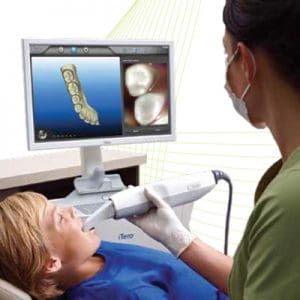What kind of training does a pediatric orthodontist do? Dr. Adam Schulhof, DMD is a pediatric orthodontist with offices in New Jersey and New York and is the founder of The Schulhof Center. Dr. Schulhof attends to patients of all ages, both children and adults. He is a graduate of University of Medicine and Dentistry of New Jersey (with honors). He received his specialty education at Columbia University. Let’s take a look at what that means…
Training as a Pediatric Orthodontist
If a student knows they are interested in training as a pediatric orthodontist when they are in high school, it is advisable that the student begins taking classes that will lend themselves to the kind of program and classes they will take in college. These classes include science courses, such as biology, chemistry, and anatomy. Students should take as many of these classes as possible because it will provide a solid basis for college-level classes in these subjects.
Pediatric clinicians should take classes when they are an undergraduate that focus on biology and chemistry. Although it may not be required to have a bachelor’s degree to get into dental school, it can certainly improve the student’s chance of being accepted into a dental program. These programs can be highly competitive. Students can also choose a pre-dental program (which are also competitive), so they get a good basis for knowledge of the subjects that will be focused on when they take the Dental Admission Test (DAT). Then, the student must take the DAT to get accepted to a dental school.
Dentistry
Dental school will entail a multitude of education and is usually a four-year program. The student’s exposure involves layers of knowledge coupled with practical skill building. Students get taught anatomy, biology, medical ethics, and many other science-based classes. During the first year of dental school, the students have virtually no contact with patients. During the second year, students will begin practicing basic dentistry, like teeth cleaning, on other students. Students will continue learning about preventative dental measures and dental anatomy. As the years of schooling progress, the level of knowledge increases by being taught more rigorous classes.
After two years, students take the first part of the National Board exam. This lets the student know if they are on track and what their success in dental school is. During the third year, specializations such as pediatrics and pharmacology are introduced. The third-year entails a lot of exposure to patients through mock offices and clinical experience. At this point, the student gets more and more clinical exposure. It is during the last year that you will take the second part of the National Board exam. Passing this test will make the student a licensed dentist.
Mastering Orthodontics
After four years of dental school, the student will need to enroll in an orthodontic school, which is very competitive. Schools are very selective and demand a top academic record accompanied by letters of recommendation. During this phase of education, the student will be involved in clinical practice and hands-on instruction. Students are also required to do a residency to achieve this specialty. A residency allows the student to work under direct supervision. Residency can take 3 to 5 years to complete. This is a very rigorous process because it involves daily attention to patients and evening coursework and lab work.
Some of the classes the student takes include how to determine facial and jaw alignment, how the teeth move, and how corrective treatment is applied. Courses will include subjects such as head and neck anatomy, craniofacial pain, and biostatistical methods. Students will also learn about tooth movement, occlusal abnormalities, and how to position brackets on the teeth.
The Extra Schooling
After this schooling, there is a written examination, a clinical examination and an oral exam, including patient cases. Once the license is obtained, it must be reviewed every 10 years. Additionally, continuing education is required and varies on a state-by-state basis and is required each year. This enables clinicians to learn about new techniques and changes in orthodontia and dentistry. For instance, if the student wants to learn about lingual braces, they must complete more education.
Further education for a specialization in the care of children care is required. There are another 2-3 years of extra schooling required for working with children. Another characteristic a good clinician should have is that the doctor should be good with children. It is not advisable for someone who does not have the patience to deal with children to enter the arena of the pediatric orthodontist profession.
What Dr. Schulhof has to Offer
-
Lingual Braces
Dr. Adam Schulhof is a renowned orthodontist, known for being the world leader in Incognito lingual braces. Lingual braces are those that are placed behind the teeth. When this is achieved, there are no noticeable appliances on the front of the teeth, so no one will know you have braces. Dr. Schulhof specializes in these kinds of braces and has been on the forefront of the cutting-edge technology. In fact, he was intensely involved in the research and development of Incognito Lite. It takes hands-on training and education to be able to successfully apply lingual braces to the mouth.
-
Cutting Edge Technology and Pleasant Environment / Staff
Everything that Dr. Schulhof uses in his office is there for the benefit of his patients. He is not just looking for cool stuff to use. He wants his patients to have a pleasant experience when they come to see him. By providing cutting-edge technology and equipment, the office can make the patients happy and enhance their experience. Through continued education, he discovered a method to make molds that do not involve sticking a tray full of goop in the mouth.
Since the time a patient spends with the Dr. Schulhof is limited, the staff is vital to his success. They must also be good with children. With a great and friendly staff, the patient experience is bolstered. The staff is invaluable to the success of the office and the happiness of the patients. Creating this environment is very important to Dr. Schulhof. His priority is to make the experience for everyone involved in the treatment as comfortable and stress-free as possible.
-
Invisalign
Invisible aligners are all the rage. The Schulhof Center is a well-regarded center for Invisalign treatment. New York teenagers are crazy for Invisalign removable bracing. Another reason to be a pediatric orthodontist.
-
Teaching
Dr. Adam Schulhof continues with education by preparing other clinicians, primarily in lingual braces. Dr. Schulhof is a clinical trainer and enjoys being able to pass along his expertise to other clinicians. In addition to physically educating other doctors, he is a public speaker around the world. He wants other practices to benefit from his passion and his knowledge. Not only will this inspire other doctors, but it will cement his reputation as the leading source of lingual braces methods and office atmosphere. Dr. Schulhof’s training continues because he is always looking for a better way to do things.

Contact us Today
Dr. Schulhof is a wonderfully compassionate pediatric orthodontist and highly regarded in his field. And dedicated to making his patient’s experiences with his office and staff top notch. His expertise in lingual braces is only out shadowed by his care for his patients. So, if you are ready to get the smile you always wanted, give The Schulhof Center a call and begin your journey with a wonderful staff and a world-renowned orthodontist.
Like what you read? Comment below or CLICK on an APP LOGO to follow us and share the conversation
New Jersey Office
400 Kinderkamack Rd.
Oradell, NJ 07649
Phone: 551-231-5323
What Kind of Training (Pediatric Orthodontist)




